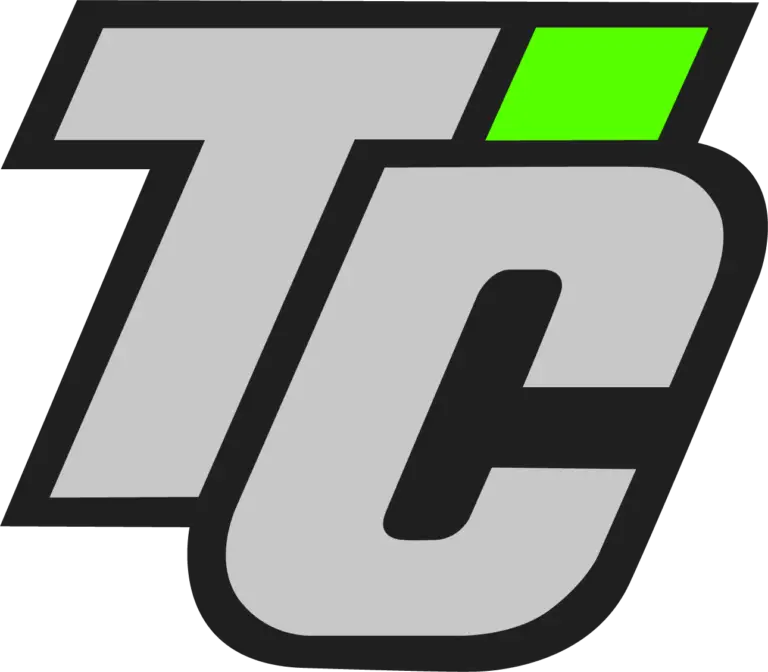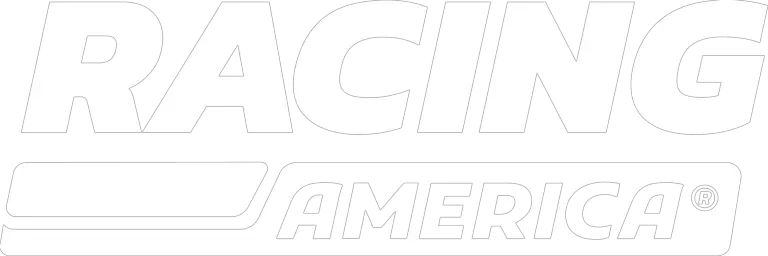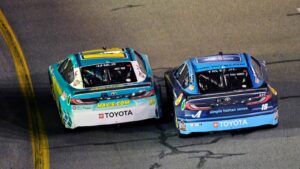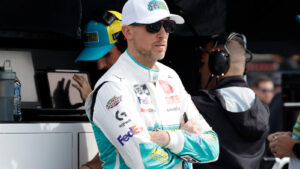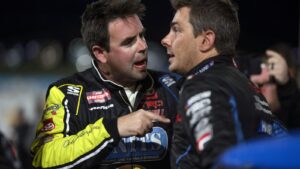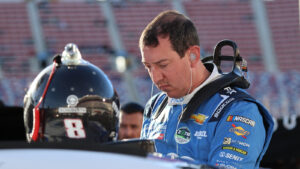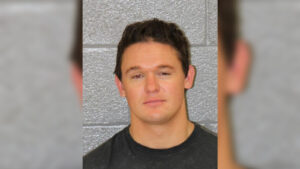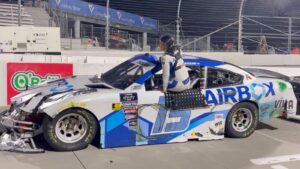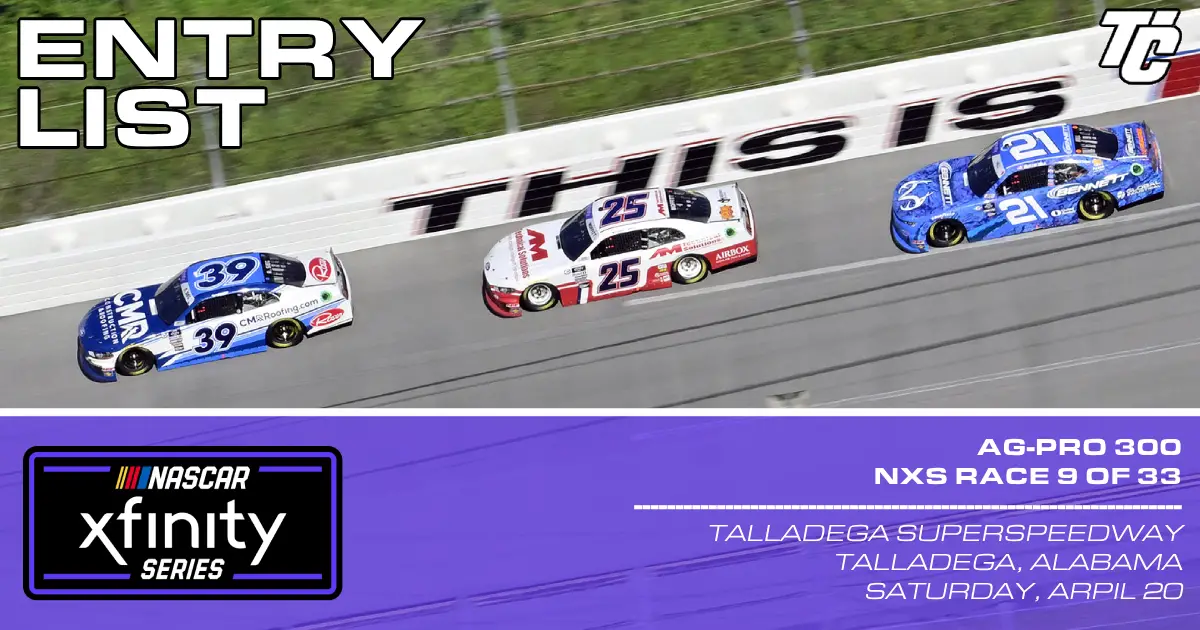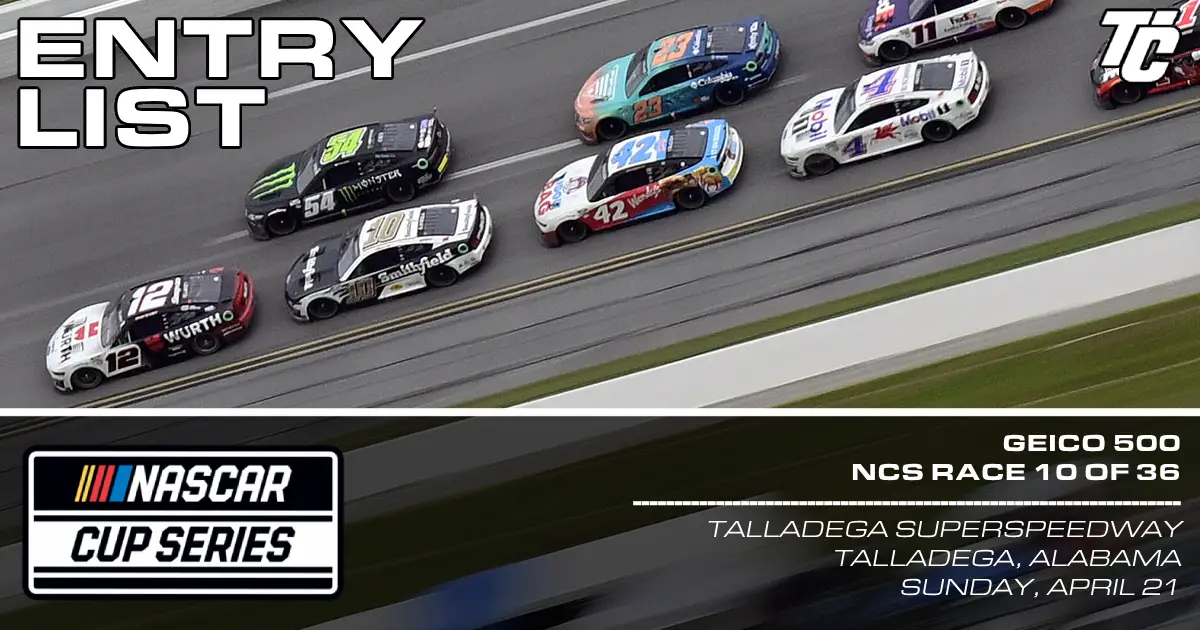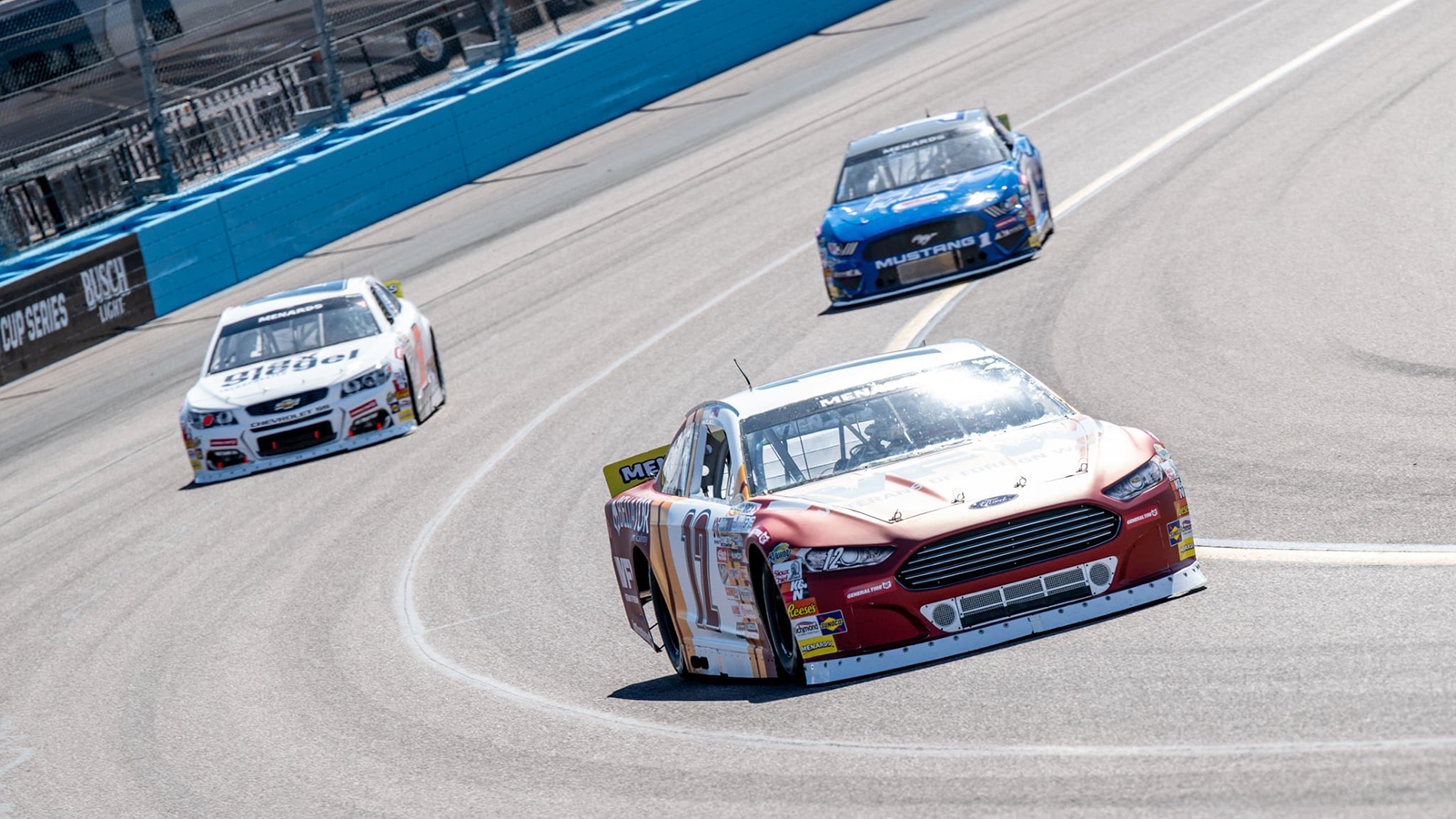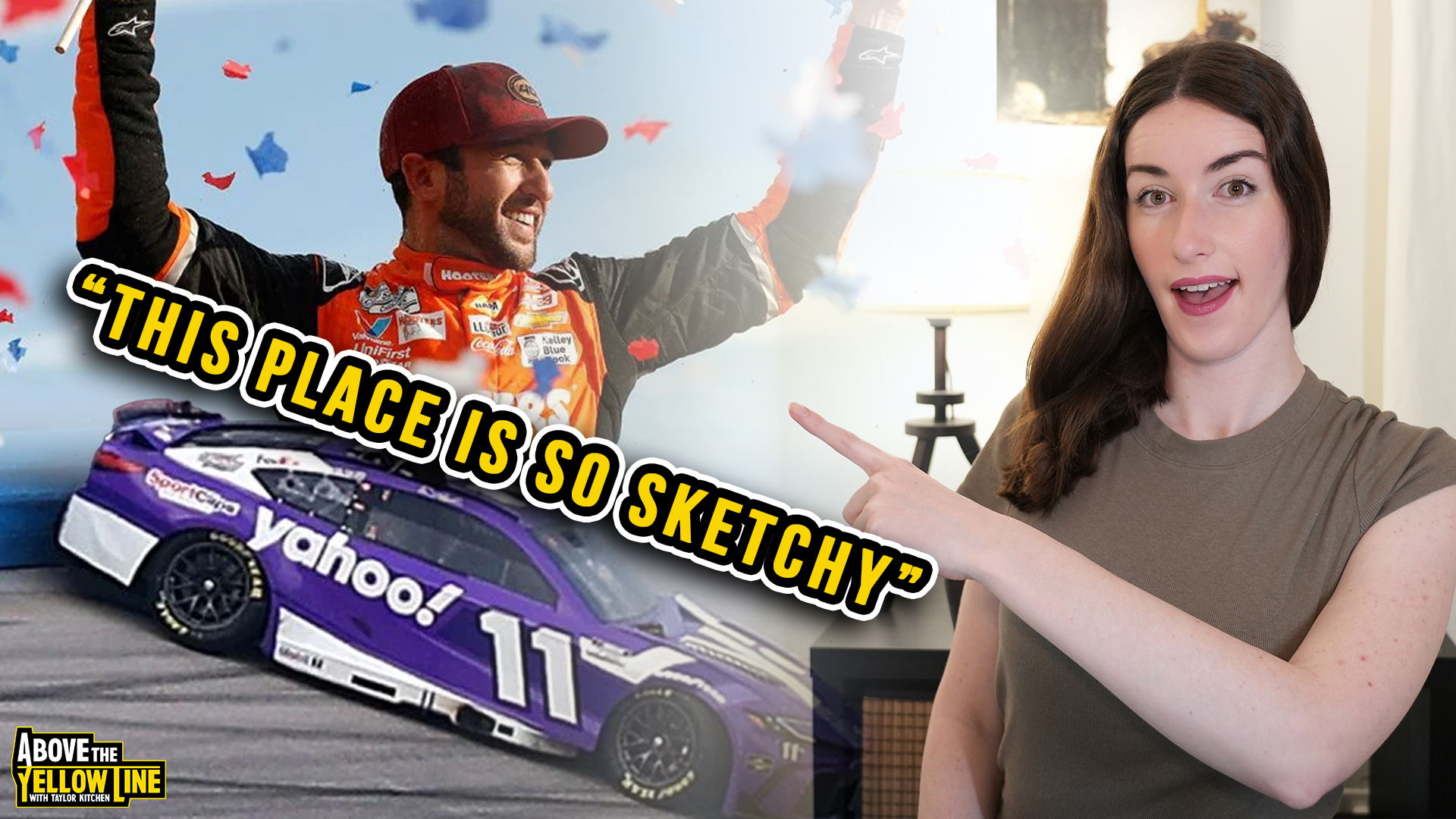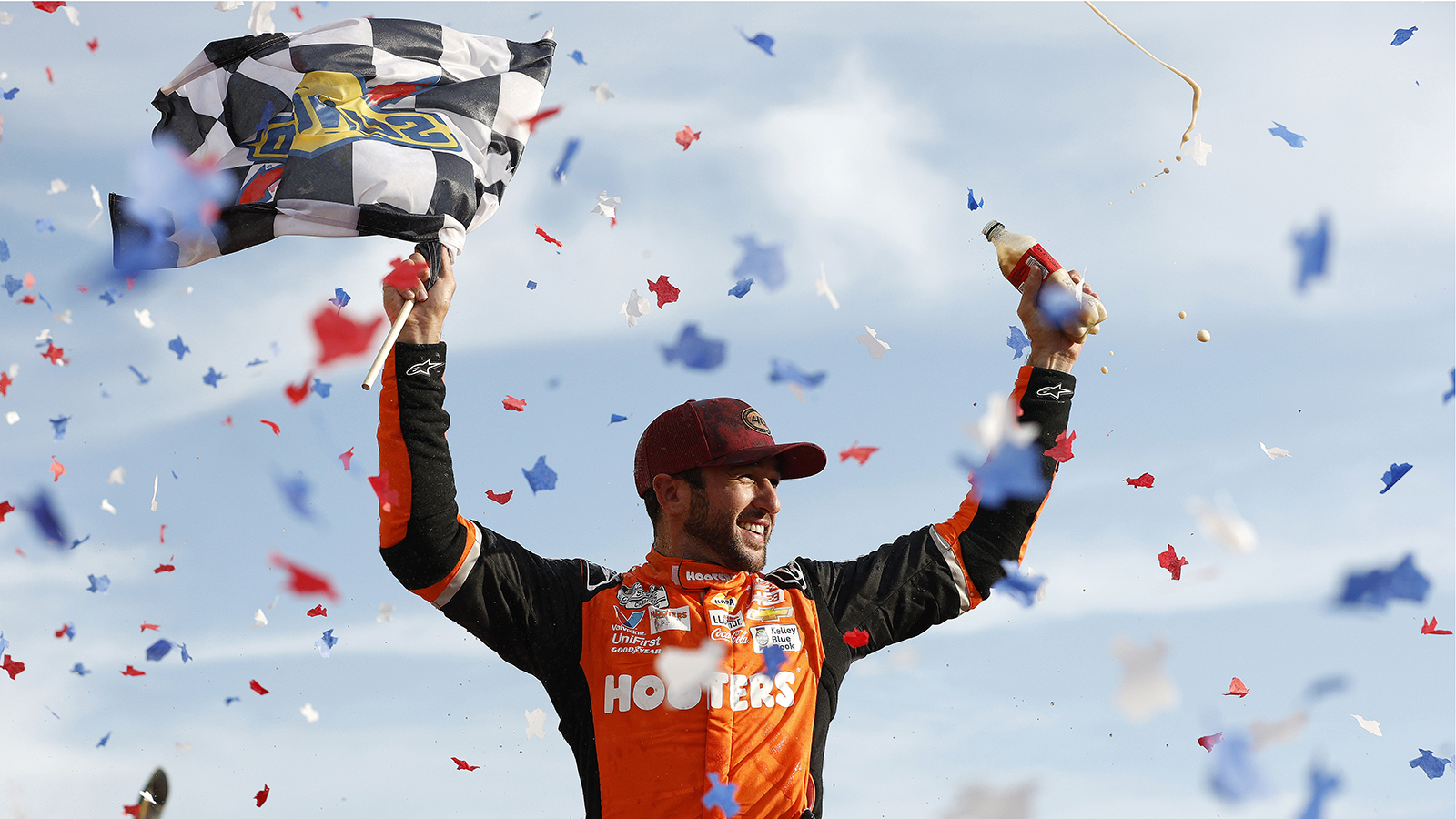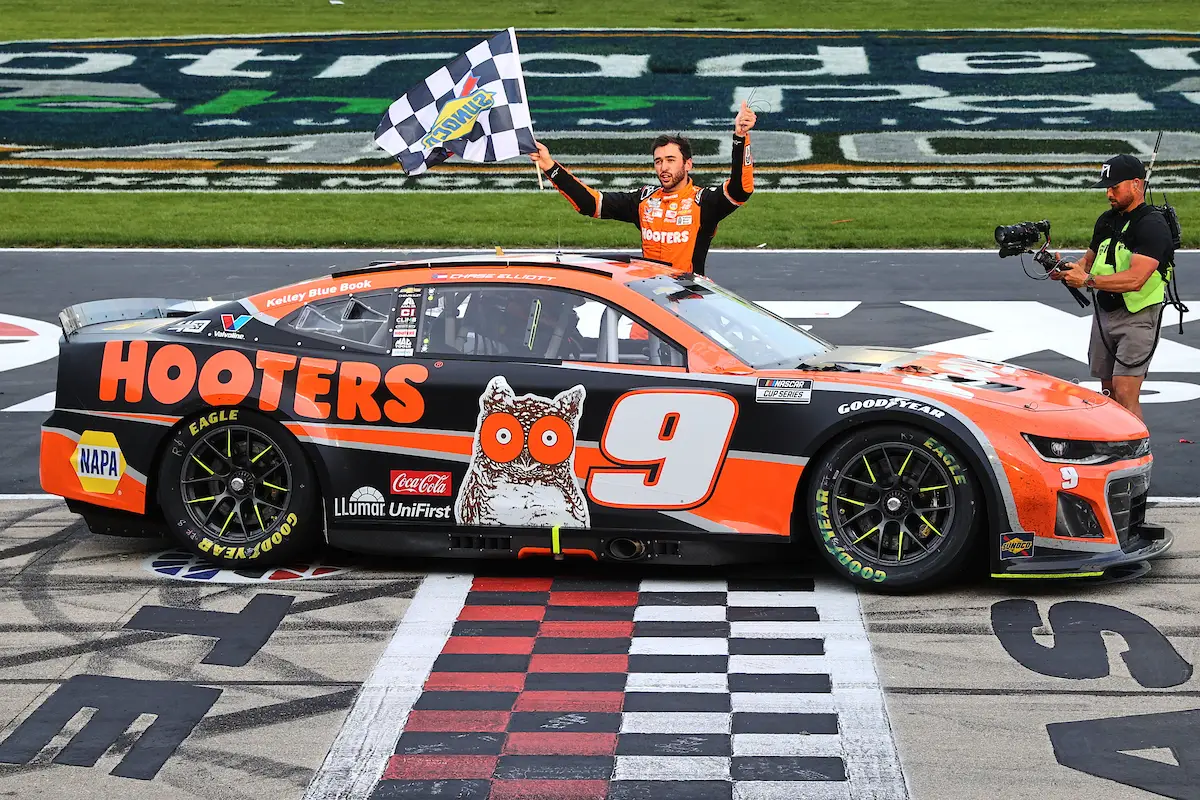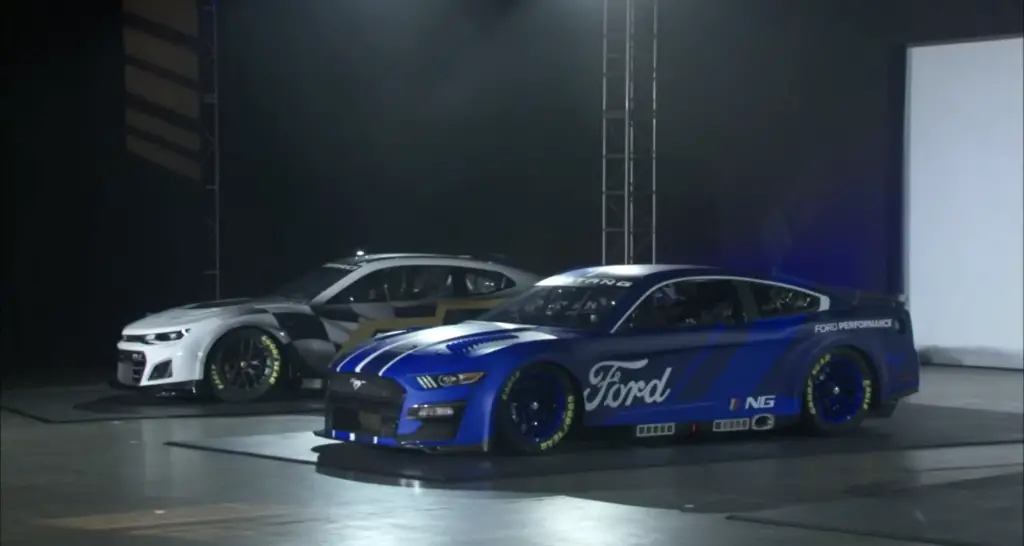
The following is a transcription of the media availability with John Probst – Senior Vice President for Racing Innovation, NASCAR — and Brandon Thomas – Managing Director of Vehicle Systems, NASCAR.
Provided by: NASCAR Media Services
THE MODERATOR: We are now joined by NASCAR senior vice president for racing innovation, John Probst.
Q. I had asked this question of Steve earlier and he suggested I ask you for your opinion, as well. I just wondered if you could describe a little bit how the process of Next Gen changed or evolved because of the stoppage related to the COVID pandemic. I know obviously you were going to debut the car this season. Did the extra time help in some respects? Did it also hurt in some others?
JOHN PROBST: So the first part on how did COVID affect the project, when COVID hit we were actually early on when COVID hit. We were in a point of the project where a lot of what we were doing was largely in the CAD simulation space, so we were able to continue for a little while.
And then as some of the key suppliers to the project started getting shut down, we found ourselves in a phase of the project where we were leading into the submissions for the OEMs, and when we do that, that requires the OEMs and NASCAR to be together when we do the wind tunnel test and when we prep the cars at the R&D Center.
When we got to the point where we could no longer co-locate or even be near each other, that’s when sort of the reality of the seriously of what was going on — that was pretty early on, right after the Atlanta race was canceled due to the COVID outbreak.
I think that’s when we kind of knew that we were in a position where we weren’t going to be able to soldier through it and came to the realization that we needed to start figuring out contingencies, and then obviously the likely outcome and the eventual outcome was we were delaying it until 2022.
I think did it help or did it hurt? I don’t know. It feels today like it probably helped. It gave us a little extra time to get some more testing on the car. A lot of our vendors, including us, were able to probably work more normal hours, I would say, that we were prepared along with our vendor base to deliver that car in 2021, but it would have required a lot of long nights from just about everybody involved in the project.
The 2022 launch feels like we’re still very busy, but I think that if we all looked back and reflected, we’re probably doing it in a more sustainable workload with respect to everybody’s workload.
Q. Can you take us inside the safety testing that I’m assuming you’ve done already? What have you seen? What have those numbers been like on the safety side?
JOHN PROBST: Yeah, like I said, today is a milestone for us in releasing the cars. We still are in the process of testing the car. The car is being tested right now in Texas. There’s a lot of safety stuff that has already been done. We’ve leaned on a lot of our history with respect to the development of the current Gen-6 car. We’ve implemented some state-of-the-art simulation tools that have let us do things that we have not been able to do in the past, as well as a lot of sub-component testing to where we’re correlating the model from design to the testing that we had done in the lab, and from that perspective, on our end we’ve actually, as well, simulated some of the bigger incidents that we’ve had with the current Gen-6 car on the Next-Gen car.
I’d say that we’re pretty happy with where we’re at. I won’t get into the specifics of where we’re at and we still have some testing yet to come, and we’re eight months out — well, we will be eight months out when we complete up all that testing from the debut in 2022. We feel like we’re in a good place. So yeah, that would be my answer to that one.
Q. When Byron crashed the car, did it do kind of what you expected it to do, and have you done like an actual crash test with it, and can you kind of just summarize if it did what you expected?
JOHN PROBST: Yeah, I’d say all the testing that we’ve done today, and that is one of the incidents that we have simulated, I’d say the car has performed as expected. No surprises on our end.
So yeah, no surprises from our side of it. We feel really good where we’re at, and I think that as we get closer to next year, we’ll share some more on that front with you guys. I think we’ve made some really big strides on that front.
Q. John, you turn on Nightly News and OEMs have a chip shortage for passenger cars, trucks. Any of your vendors suffering, and will this have any impact on the rollout of the Next-Gen car?
JOHN PROBST: From our perspective, no. We may have vendors that have been impacted by it, but they’re not impacted with respect to the parts and pieces they’re providing for us.
We’re already starting to make deliveries to the race teams now, parts and pieces that will culminate middle of June when we start delivering chassis to the teams. But I think we’re largely isolated from that, in part because while the car is a clean sheet, there is a reasonable amount of carryover parts on the car, and all of the electrical parts or electronic parts that could be impacted by that are carryover. A lot of the inventory that’s already in our garage is reusable on this car.
I can’t say if it would loosely impact a team later in the year trying to go to a test and not being able to get a hold of sensors or something like that, but as far as any material impact on what we’re doing, there’s no sign of that today, and we don’t anticipate that moving forward.
Q. You mentioned earlier that you had some new or different simulation techniques. Can you tell us a little bit about that and how that’s changed the development process?
JOHN PROBST: Yeah, certainly. I alluded to it a little bit in my opening comments today in the press release, but we’re able to use a tool called LS-Dyna, which is a tool widely used by the OEMs to do a lot of their crash simulations.
If you look at sort of how the industry has gone, a lot of times the testing you do as you go through a development project such as we have done here, and we obviously have our OEMs along with us here lending a lot of their experience to what we do, you find yourself designing a lot on the front end, going through iterations.
We went through countless iterations of the car, simulating all these different events that we’ve seen over the years just to evaluate how the cars performed. When you lean on a lot of our OEMs’ experience in that world as well as we have a really in-depth database of our own, over 2,500 events now that we compare the cars to, I think that from a tool perspective, we’re able to validate sort of as we go, and as all of the little bits and pieces validate themselves as we go through the design process, there really is an expectation for no surprises out the back end when we finally do the full entire car crash in June.
Q. About the power plant and where the OEMs are going regarding that issue, what is NASCAR’s plan for future advance motorsports in the engine and things of that nature, because at some point in the next 15 years we won’t probably see an internal combustion engine on the showroom floor.
JOHN PROBST: Yeah, I think it’s a good question. It’s probably a little bit beyond the scope of today, but I would say that obviously we’re in collaboration, you heard the word used over and over again today, and I think when you look at our relationship with our OEMs when it comes to alternative power trains, whether that be hybrid of some form or electric or hydrogen combustion, you name it, and you hit the nail on the head there, there is a very aggressive development in the direction of change, away from internal combustion engines, we are very aware of that. We have also been very open that we’d like to see more OEMs come into our sport. We know that to do that, we need to be looking in that direction.
We actively engage our current OEMs and potential OEMs all the time on where they want to go with respect to that. We mentioned that this car protects for a lot of what we could anticipate coming out in the near future. I feel like we’re in a good spot to react as needed.
Q. With these three cars now being released and you actually — the fans being able to see them, have you been in communication with other manufacturers in case they want to jump on board now that they see these cars look more like the stock cars that win on Sunday, sell on Monday? How fast would you be able to get them in if they did want to jump on board?
JOHN PROBST: Good question. Like I said earlier, we talk to all of them. I can say that some of them have been very willing to provide feedback on this car for us. Obviously off to the side, they’re not in the middle of what we’re doing, and may for one reason or another not want to be associated with it at this point. But I can say that we’ve had a lot of OEM feedback on this car. Probably not ready to announce anything that we’ve been discussing with anything other than the three OEMs that we have in our sport today that are obviously very important partners to us.
And I think that if a new OEM did want to come in to our sport, we’re probably beyond the time that they’d be able to do that for 2022.
Q. We saw in the ’80s with the modified division when cars are too stiff they hurt drivers, and more recently we’ve seen some issues with Ryan Newman’s car or Joey’s where cages deform a little bit. When you design a race car, how do you get that right balance between crush zones and deflection and having a car that’s too stiff, and what was the thought process when you built this one from a clean sheet?
JOHN PROBST: Yeah, certainly from our perspective when we started to design the car, we looked at obviously right fronts into the wall. It’s a very common accident case for us. We looked at roof crush, so in the case of the Joey incident or the Newman incident. We look at T-bones. We look at all kinds of impacts that we can anticipate are likely in our sport.
Like I was saying earlier, we have well over 2,500 now recordable incidents that we plot on a — picture a car in plane view looking straight down on it when you do a little plot of all the accidents that we’ve ever experienced that have been recordable events, meaning something that’s had an impact level that actually turns the data recorder on, so generally anything that would damage the car in some way or the other will be recorded.
I think that we can then start to design the car, like I said, iteratively going through those scenarios trying to evaluate how would this car perform compared to the current car. We feel like the current car is in a very good state with respect to driver safety.
When you look at the new car, it’s a balance between, I think you hit it on the head, of stiffness because you don’t want the intrusion typically, especially in the center section of the car, so generally the main direction of anything that would harm the driver is generally from an intrusion perspective, certainly with SAFER barriers and things of that nature nowadays, we’ve tried to attempt to as best possible mitigate the things that could impact the driver from a crush or the lack of crush perspective.
This new car implements a lot of front and rear crash structures that have been through that process and tested pretty heavily on the sort of rear — at the clip level, so we’ve taken the car to some of the test labs that all the OEMs use and have run them at load and at speed into walls.
You know, you’re right, it is a balance between all of that. We feel like we have a pretty good solution where we’re at right now, and obviously we’ll validate that out the other end. If we see anything out of that that we don’t like we’ll address it.
Q. I was wondering if you could talk about the composite bodies a little bit and what led to that change coming from I think the steel bodies from the Gen-6 to composite and how that’ll help the drivers race a little bit more aggressive on their part.
JOHN PROBST: Yeah, that’s a good question. We had not talked about it beyond just mentioning it in the media event that we had earlier. When you look at bodies in our sport, a few years ago we implemented a composite body in the Xfinity Series, and we feel like by and large that’s gone over really well.
If you take the scenarios of a championship race when it was at Homestead and a lot of times you guys have probably seen it, drivers that are able to ride the wall generally are faster, especially late in a run and as we go into the night there, and it feels like — an Xfinity guy with a composite body was able to make contact with the wall and continue on without really any ill effects.
Even from my team side I can say that you can be dominating at Homestead and have a little brush against the wall with a sheet metal body and you get that little bit of deformation, almost like a soda can or something that you’d smash, that once you lose the shape, you run the potential I guess that you could help the car, and you see that occasionally, but more than not you hurt the car and you really impact your day and your performance.
We see it also when cars get together, you’ll see a lot of times the damage will impact the performance of the car as they move forward but then also a lot of times you’ll see flat tires result from that. That’s another thing we haven’t talked a whole lot about is we’ve tried to inset the tires a little bit off the body so that they’re not the first point of contact. We feel like we’ll make some progress there. Will it be perfect? No, you’re still going to be able to find a way to hit a car and have an issue with your tire, but in particular the composite body in Cup is something that we took the lessons learned from the Xfinity project that we did several years in the making now.
Because in the Cup Series we’re able to use some more advanced materials with respect to the carbon lay-ups, we’ve now been able to and the vendor has demonstrated this through very non-scientific methods so far of front end loaders smashing body panels into the parking lot. You can actually see the body panel return to near original shape with some pretty significant hits from the front-end loader.
So I feel like from a bumping, banging, getting up into the wall, the bodies themselves will be able to survive some pretty significant impacts, be it with another driver and/or the wall, and I feel like that’s only good for our fans because we’re going to see a lot of their favorite drivers stay in events that in prior generations of our body would have probably meant the end of their day, certainly the end of their competitive day.
THE MODERATOR: Thanks, John, for joining us, and we will see you down the road.
We are now joined by Brandon Thomas, our managing director of vehicle systems.
Q. This is a question that I put to Steve earlier, but I’d like to ask you the same if that’s okay. Looking back at the various parts of the car that you’ve been involved with, there are some headline making changes to this Next Generation car, what’s been the biggest headache to engineer?
BRANDON THOMAS: Well, you know, the start of the process with trying to understand exactly what we wanted to end up with in terms of what the car should look like, for instance, how the car should perform, what all types of things are going to end up in the car, one of the first things John and I did when I started was go through and write out imaginary bill of materials of the car, and I sat down and wrote a design brief for the car.
You don’t embark on a project of this size without having some sort of a roadmap of when we’re done, it better be this.
And so from an engineer, that’s easy to do. So I’m getting to the answer, sorry about that.
From an engineer, that’s easy to do. Then what’s a headache is you have to go get buy-in from all parties.
While we worked in heavy collaboration, heavy agreement with the OEs, with race teams, with our own people and all that, it’s difficult as a technical person to sometimes take that feedback when somebody says, well, I don’t want that, I want something a little bit different. As a technical person, you’re like, no, it’s got to be this. Like I thought about this a long time.
So that type of stuff is — that was probably the biggest version of headache, if you want to call it that. And it was a big learning process for me just trying to get to a product that we were going to be happy with at the end.
Q. Short of just dealing with trying to get a project done during the middle of a pandemic, what was the greatest challenge that you encountered throughout the course of this project?
BRANDON THOMAS: Well, you took my easy answer away. Obviously as we got started in 2019, with everything in a normal state and rolling, we knew we wanted to go the coupe direction. We knew that we were going to have to address a lot of things to fit that coupe style to the chassis that wasn’t in a current car.
So when you got into terms of a challenge, it was basically trying to — tried to work it through on our own how we were going to make all the elements of the safety aspects to the car, the packaging of all the parts. You know roughly how big everything that you’re going to package into the car is going to be at that point in time.
So we knew that we were basically stealing some real estate from ourselves and going to have to fit it all together.
I mean, I think that was probably a large part of this challenge because up until now, typically a stock car has not been laid out completely as a full assembly with all the subsystems in it to this level of detail. So yeah, that was definitely a challenge.
Q. How is this going to change how you all inspect the cars on Sunday? Do you kind of have a footprint or something established by the composite bodies in the Xfinity and you’ll kind of follow their lead? What are we looking at?
BRANDON THOMAS: I think if you sit there and look at inspection from an outsider’s viewpoint, it probably won’t look much different. We’re definitely working on a lot of that stuff right now, have been for quite some time with a lot of ideas and things that we feel like are important in the car.
But until you drill down into a real technical level, I can sit here and say, we’re going to inspect the outer body, similar to what we do today, but some of that stuff will change, but it will change in very minute detail, kind of in-the-weeds stuff where a race fan unless they study this stuff nonstop, it’s not something they would even notice that we would be doing differently.
Q. You had two cars, one was built which NASCAR, one was built by Action Express, and there were some differences in those cars like there was an old fuel filler on the driver’s side for the Action Express car. Were those differences, those nuances by design or was it something that wasn’t going to affect the final impact of the car in the direction you were going, and how do those things come together to complete this final version?
BRANDON THOMAS: That’s a good question. I’ll say an astute observation, even at that.
The Action Express car came about right as kind of the COVID situation developed for us, and we were given this task, that in order to get some more testing done on the platform, especially in a road course scenario, we wanted to enlist basically the Action Express guys who are awesome guys to work with, but we wanted to enlist them for their road course acumen, we’ll call it. They race road racing and IMSA week in and week out.
We started gathering up parts for them and started working on this car, but a lot of those differences were just parts that we didn’t have or parts that they didn’t necessarily have, and it was a case of the fuel filler being there on like the left rear quarter. It’s not a big deal to how the car actually runs. It’s really not even a big deal to the aerodynamics of the car. It can be in a current car. And you sit there and stare at the fuel filler area between teams that do a ton of aerodynamic development and teams that don’t have the budget to do aerodynamic development, and those buckets look different, and they have to look different on a superspeedway versus a short track.
We want to get that kind of stuff — you want to rein that kind of stuff in, but in the reality of the way the Next Gen body and aerodynamics work, it’s not an important area in the car.
Q. Were there any others? Just curious.
BRANDON THOMAS: There was actually a lot of differences, subtle differences like that between the cars. The Action guys were the first ones that put the second set of louvers in the rockers. After we did the first test at Daytona and we definitely snuck that one in under the radar on purpose, I’m not sure who was smart enough to spot the Action truck in the back parking lot after the Cup race there on Sunday night, but whoever it was that took the tram tour, we woke up the rest of the fans at 9:00 a.m. when we fired it off.
But we had some heat issues there. Obviously it was a hot day. It was August in Daytona. And so they were the first ones to do the second set of louvers, and we did some measurements in their car to justify that, then added a tire car.
Our car has what I’ll say roughly 300 or so sensors in it. The Action Express car is far more stripped down on the data side than that. When those guys came back with some ideas here or there, it was certainly stuff that we would kind of test and validate with some data.
Q. I’m the guilty party.
BRANDON THOMAS: Well, I knew somebody did that because the story leaked right off the bat and it was definitely those Big Foot level photos from a tram ride. We were actually — we actually were somewhat impressed with the level of investigative reporting that happened on that one.
Q. One of the biggest things that stuck out to me with the Next Generation car, these are three different bodies when it comes from the look, something that I don’t think I’ve seen in the sport since like the mid-2000s when we had maybe even four manufacturers at the time. I was wondering if you could talk about what led to having three different bodies for each manufacturer and bringing the stock back into NASCAR.
BRANDON THOMAS: So my second week here — I joined NASCAR in January of 2019, so my second week here, went to the event in Atlanta, and then we had a bunch of meetings with OEM folks down there, and then went to the event in Vegas the week after that, and that was the first time I’d met Mr. France, Jim.
He walks in on Saturday to the Cup hauler and we’re standing there and I get introduced to him, and he says, let’s take a walk, and we walk around the garage a little bit, and Jim likes to move around really incognito, and so we walked around and talked about cars and talked about the looks of the cars and things like that, and his first point was we want these cars to look like they should.
As we really sat down with the OEMs, even starting in Atlanta the week before and then as we started putting together working groups for the aerodynamics side and overall vehicle design side, it was one of our tenets from the beginning that we want a lot of OEM identification in these cars. We want the fans of a particular car company to be able to identify with their car. And we want the fans that are motivated by the looks of the cars to be rewarded with a car that looks impressive.
That was definitely up there in the design brief, and it was definitely up there in the cornerstone of what my management wanted, what the OEMs as our partners wanted. It was there from the beginning.
So then it was the technical task of, okay, as we move through this, how are we going to get to a level playing field on the aerodynamics side, how are we going to get to our version of racing to where the OEMs can have this branding but we’re not going to have one OEM design something into their car that can be heavily manipulated and deliver a lot of performance.
THE MODERATOR: Brandon, thank you again for taking the time to join us, and good luck as we go into the 2022 season with this brand new car.
